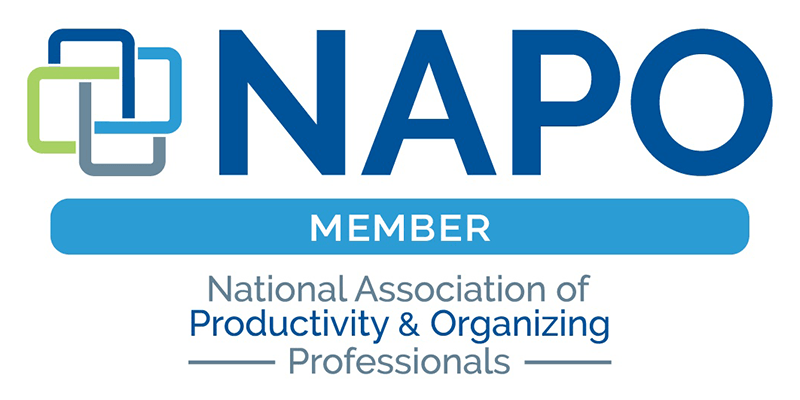Organizing Blog
Combat Kitchen Clutter!
backCooking and baking in your kitchen brings warmth into the heart of your home; but what if your kitchen is a stressful place to be? Often, this is the dumping ground for mail, bills, work, and miscellaneous items. Along with this chaos, there may not be proper systems in place to make cooking and baking enjoyable. So, how do you make one of the most important rooms in your house a peaceful place for your family and friends to gather?
Zones, the meat and potatoes - Setting up zones in your kitchen will make finding what you need when you need it so much easier, saving you valuable time and effort.
- Cooking zone - This area should be closest to the stove, containing all the items you would need to cook any meal i. e. utensils, pots, pans, etc. You may be a visual person who likes to have things handy; if so, set a place for cooking utensils on the counter in a container for easy access. More of a left brainer? Most kitchens have a few drawers close to the stove; designate one or two for your utensils. If these drawers seem to be too small for everything you have, think about downsizing a bit...4 spatulas anyone?
- Food prep - This zone will contain all items you would use to prepare your meals i.e. spices, oils, knives, mixing bowls, measuring cups, oven mitts, and cookbooks. Some of these items may make more sense to you to put them in another zone, such as spices; it is common for some people to have these in the cooking zone. This is totally up to you and your personality. Just make sure you stick to the zoning concept.
- Baking zone - If you are not much of a baker, naturally, you don't need this zone. It is not unusual to have some of the food prep items in the "baking zone," such as measuring cups, mixing bowls, and measuring spoons. Again, this is based on your personality, what works for you and your kitchen.
- Daily dishes - This area is for dishes and utensils you use on a daily basis like plates, bowls, cups, glasses, etc. If you have a dishwasher in the kitchen, use the drawers and cabinets close to it. This will make unloading it so much easier, especially if it is a children's chore.
- Food storage (pantry) - If you are lucky enough to have a food pantry, make sure to designate shelves for certain items. An example would be: flour and sugars together, cans together, separated by fruits, veggies and soups. Snacks on one shelf and breakfast on another... If you have room, paper products can be stored in the pantry as well. If there is no room, the garage or laundry area can be a good place for "kitchen overflow".
Refrigerator - Cleaning out your refrigerator on a weekly basis is vital to keeping it a healthy place to store your food. A great tip for labeling leftovers: keep a sharpie and note pad handy, and when you put leftovers away, write the item and date on the sticky note to label the container. According to a recent AP article, Americans waste 14 to 40 percent of all food prepared for consumption. Most families don't even bother to save the leftovers because they know they will end up forgetting about them. Labeling leftovers is a simple way to reduce waste and save money.
Major clutter clog - Our energy flows through the kitchen, and if there is a clog of energy in this area, the rest of the house suffers as well. A clog may occur in the fridge - when was the last time it was cleaned it out? A clog may occur in the pantry - if there is too much food or other items, it may be hard to see what you have, and some of it may be expired. What about the amount of cups, plates, or utensils? Think about downsizing if most of these items haven't been used in awhile.
Wishing you lots of peace, order, and joy to share!




